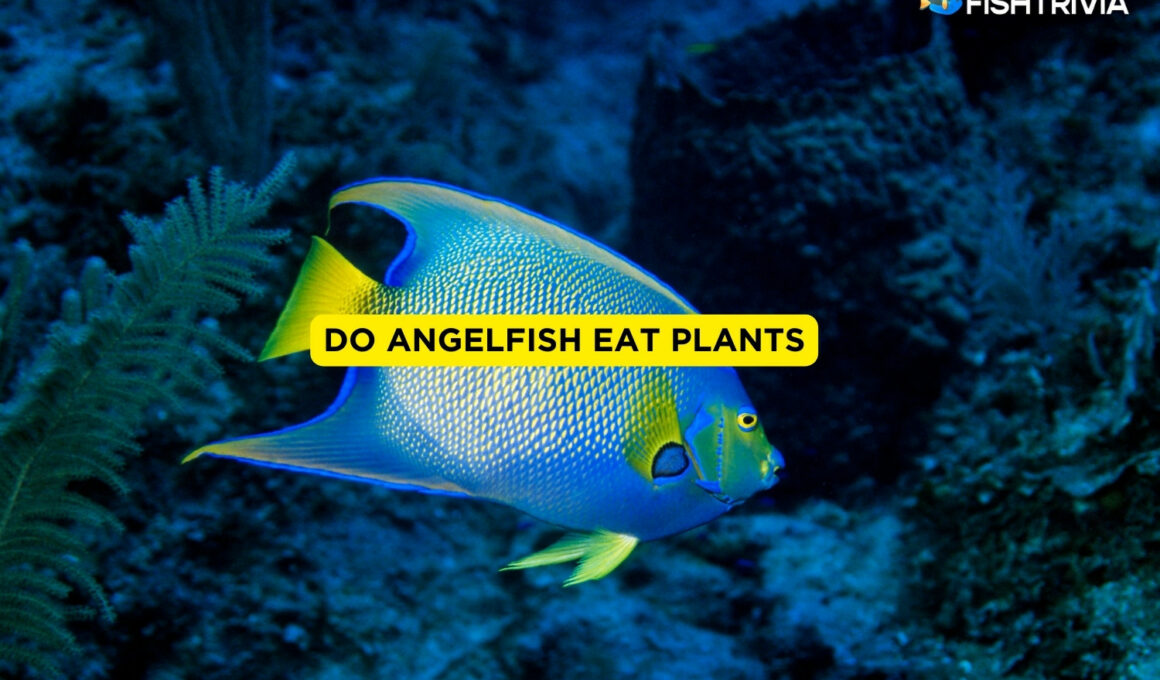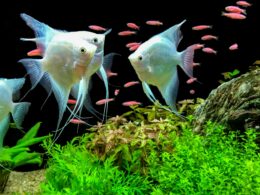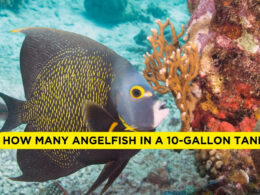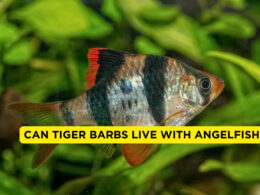In this article Show
As a seasoned fish keeper, I’ve learned that understanding what our finned friends eat is key to their health and happiness. Today, we’re addressing a common query: Do angelfish eat plants?
This question is more than just a matter of curiosity; it’s vital for creating a balanced and nurturing environment in your home aquarium. With straightforward and professional insights, we’ll unravel the truth behind the eating habits of these elegant swimmers.
So, whether you’re setting up a new tank or looking to improve the diet of your existing angelfish, this article aims to provide you with clear, helpful information. Let’s get started on this journey to ensure the best care for your angelfish.
Do angelfish eat plants?
Yes, angelfish do eat plants, but this forms only a small part of their diverse diet. In their natural habitat, angelfish are omnivores, feeding on a mix of animal-based and plant-based foods. In-home aquariums, while they primarily consume protein-rich foods, angelfish can occasionally nibble on soft-leaved plants.
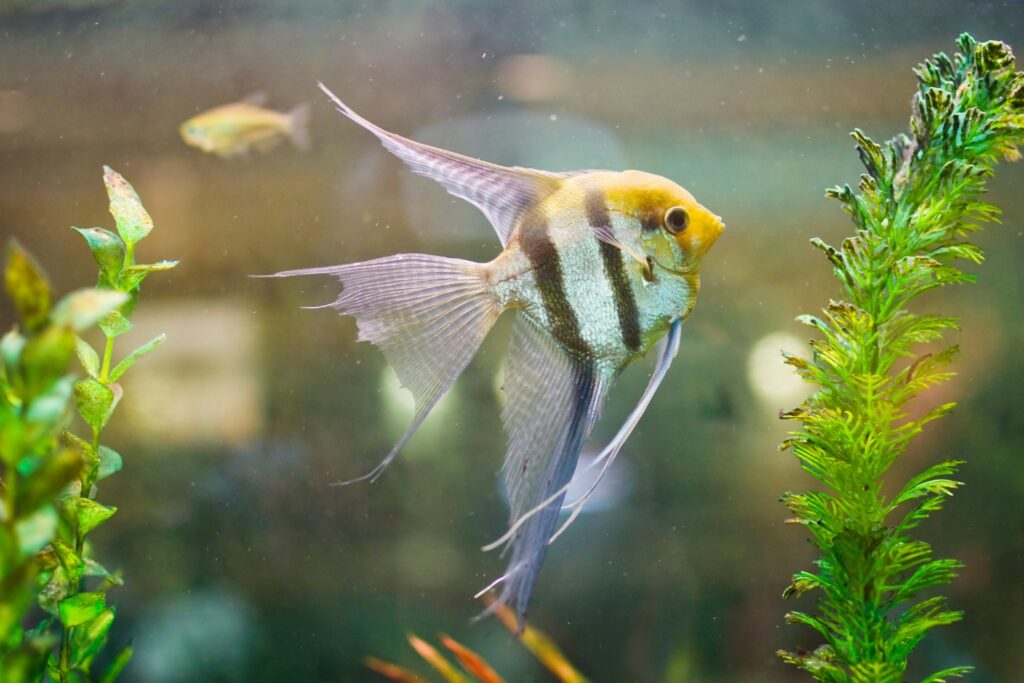
Angelfish Diet in the Wild vs. In Aquariums
Understanding the dietary differences between wild and aquarium-kept angelfish is crucial for any fish enthusiast. In their natural Amazonian habitat, angelfish have a diverse omnivorous diet.
They feed on a variety of food sources, including small invertebrates, larvae, and an assortment of plant materials like algae and soft plant leaves. This varied diet is essential for their growth, health, and vibrant coloration.
In contrast, angelfish in-home aquariums often have a diet that’s more controlled and can differ significantly from their wild counterparts. Aquarium angelfish are typically fed a diet of commercially prepared flakes and pellets, which are formulated to meet their nutritional needs.
These foods are usually high in protein, comprising ingredients like fish meal and shrimp. While this diet covers their basic requirements, it often lacks the variety found in their natural diet.
The role of plants in an angelfish’s diet, especially in an aquarium setting, tends to be more incidental than essential. While they might occasionally nibble on soft aquarium plants, this behavior is often driven by curiosity or a lack of stimulation rather than a dietary need.
In the wild, plants play a more significant role, providing not just occasional nutrition but also serving as a natural habitat for the microorganisms and small invertebrates that angelfish feed on.
To replicate a more natural diet in an aquarium, it’s beneficial to occasionally introduce live foods like brine shrimp or bloodworms. Adding live plants to the aquarium can also provide a more stimulating environment for angelfish, encouraging natural foraging behaviors even if the plants aren’t a primary food source.
This approach helps in maintaining the health and well-being of angelfish, ensuring they receive a diet that’s as close to their natural eating habits as possible.
Benefits and Drawbacks of Plant-based Diet for Angelfish
When considering the inclusion of plants in an angelfish diet, it’s essential to weigh both the benefits and potential drawbacks.
Benefits
Nutritional Variety
Plants can add diversity to an angelfish’s diet. In the wild, angelfish consume plant matter, which contributes to a balanced intake of nutrients. Introducing plants in the aquarium diet can mimic this natural variety, providing vitamins and minerals that might not be present in high-protein foods.
Digestive Health
Plant matter, especially in the form of algae or soft leaves, can aid in the digestive process of angelfish. The fiber in plants helps maintain a healthy digestive system, reducing the risk of constipation and bloating.
Natural Foraging Behavior
Including plants in the aquarium encourages natural foraging behaviors in angelfish. This can be beneficial for their mental and physical health, as it allows them to engage in the instinctual activities they would perform in the wild.
Drawbacks
Nutritional Imbalance
Relying too heavily on plants can lead to nutritional deficiencies in angelfish. These fish require a diet rich in protein for optimal growth and health. A diet that is overly plant-based may lack sufficient protein and essential amino acids.
Potential Toxins
Some aquarium plants, if not chosen carefully, can release toxins into the water, which can be harmful to angelfish. It’s important to research and select plants that are safe and beneficial for an angelfish tank.
Overeating and Tank Health
Angelfish might overeat plant matter if it is overly abundant in the tank, leading to health issues such as obesity. Additionally, excessive plant consumption can contribute to tank maintenance issues, like degraded water quality and imbalance in the tank’s ecosystem.

Best Practices for Feeding Angelfish in Aquariums
Feeding angelfish in captivity requires understanding their nutritional needs and replicating their natural diet as closely as possible. Here are some best practices to ensure your angelfish thrives:
1. Balanced Diet
- Protein-Rich Foods: The foundation of an angelfish diet should be high-quality, protein-rich foods. This includes specially formulated angelfish flakes and pellets that provide essential nutrients.
- Live and Frozen Foods: Occasionally supplementing with live or frozen foods like brine shrimp, bloodworms, and daphnia can mimic the variety they’d experience in the wild and is excellent for their health.
2. Incorporating Plants
- Choose Safe Plants: When adding plants, select varieties that are safe and non-toxic for angelfish. Good options include Java fern and Anubis, which are not only safe but also unlikely to be eaten aggressively by angelfish.
- Controlled Quantities: Introduce plant matter in controlled quantities to prevent overconsumption. This can be in the form of blanched spinach or lettuce, which angelfish might nibble on occasionally.
- Monitor Plant Health: Keep an eye on the health of live plants in the tank. Excessive nibbling by angelfish can damage plants, affecting the tank’s ecosystem.
3. Feeding Schedule and Quantity
- Consistent Feeding Schedule: Feed your angelfish 2-3 times a day, at regular intervals. Consistency helps regulate their metabolism and mimics natural feeding patterns.
- Appropriate Portions: Provide only as much food as they can consume in a few minutes. Overfeeding can lead to health problems and tank pollution.
4. Diet Variation
- Rotate Food Types: Regularly rotate the types of food to ensure a varied diet, which is crucial for providing a range of nutrients.
- Specialized Foods: For breeding angelfish or those with specific health needs, consider specialized foods that cater to these requirements.
5. Observation and Adjustment
- Watch Eating Habits: Pay close attention to your angelfish eating habits. Changes in appetite or preference can indicate health issues or stress.
- Adjust Diet as Needed: Be prepared to adjust the diet based on the angelfish’s health, age, and activity level. Younger, more active fish may require more protein, while older fish might benefit from easier-to-digest foods.
By following these best practices, you can ensure your angelfish receive a nutritious, balanced diet that promotes their health and longevity in a home aquarium setting. Remember, the key to successful angelfish care lies in understanding and catering to their specific dietary needs.






